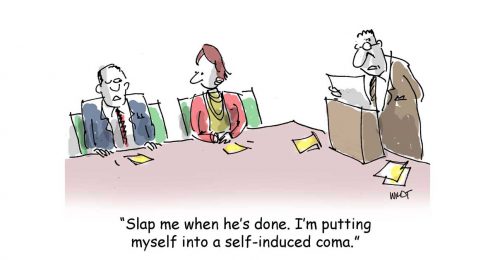Raise your hand if you’ve ever heard any of these questions from a VIP in your nonprofit?
“Quick question: why were WE not quoted in this story?”
“What a great profile on another Executive Director in our community. Can you make that happen for us?”
“If you expect me to fundraise, we really need to get press coverage just like this.”
Ugh. Right?
I always wanted to respond in one of three ways.
The snarky approach:
“OK. You choose. Should I focus on hitting payroll or writing a press release?”
The kvetchy approach:
“Do you think, just maybe, this other organization has a Director of Communications? The only director WE can (barely) afford is ME, the Executive Director.”
The old-school approach:
“We send press release all the time and get radio silence.”
But the truth is, at the heart of these responses is one theme. You have no time or money to focus on this. That’s just how it is in the nonprofit world (sometimes.)
But it’s a BIG thing for your nonprofit to get press coverage. Your board is right. It gets your organization visibility. Visibility drives credibility, leading to more visibility. That leads to power and to money and to impact.
Here’s what you need to know about the press and five steps you can take to significantly increase the likelihood that your organization will get the press coverage it needs and deserves.
FOUR IMPORTANT THINGS YOU NEED TO KNOW ABOUT JOURNALISTS
- They are really busy. Give them the story and the WHY and do it in under 3 minutes and maybe they’ll be interested. This also means that they will call who they always call unless you take responsibility for changing that dynamic.
- They need to be well informed about their ‘beat.’ A journalist typically covers a sector, an issue, etc and it is their job to be well informed. If her sector is your sector, you can be of service to her by helping to educate her.
- They are your customers and not the other way around. A journalist has no obligation to cover your 200-person gala unless there really is a story. You have to give them what they need and not necessarily what you want them to have.
- They don’t like being called just when you need something. Just like mothers of college kids (my world and welcome to it). You can build a relationship with key reporters; best to do it when you are not desperately looking for a quote or op-ed placement.
FIVE STEPS TO GET MORE PRESS COVERAGE
Step 1) Educate your board and staff (and yourself) about the power of social media.
Boards (and often development directors) can be clueless and often think of social media as an “oh by the way.”
But media is about more than just “reporters.”
It’s your job to educate your team so they define media more broadly. If you don’t have a board member who is a social media expert or uses it to its fullest advantage, get one! Bring in a guest speaker. Draw a picture for everyone – what does success looks like in online media?
Step 2) Secure an intern or a volunteer to do communications research.
Requires very little supervision. Independent work. Research all the target media outlets – focus on print for now.
The job of the intern is to learn about the key reporters and op-ed writers who cover the beats that may find the work of your organization.
Think broadly. If you are a gay rights organization that works to eliminate homophobia in schools, you are targeting political reporters and education reporters (and that is just for starters.)
What are you doing that could be a hook for a reporter on a different beat? Have the intern create that list and then do a summary of the most recent articles those reporters have covered. Are there themes and trends in coverage that provide clues to what they like to cover and are comfortable covering? And how might something you do fit in there?
Step 3) Call and ask to visit one or more of the reporters listed in (2) above. When you do NOT have a story to pitch.
Ask for a meeting to discuss their coverage of a sector that ties to your work. Tell her/him that you have some good contacts for quotes for the next story. Offer to provide her/him with some of your thoughts about trends in the sector. Build a relationship.
If you can illustrate that you are helpful, your card winds up in the journalist’s rolodex. The journalist is smarter for this conversation and will appreciate that. And you are now officially a source.
Can you do this once a month? I bet you can.
Step 4) Breakfasts, not press conferences.
Unless you have earth-shattering news, stop with the press conferences. And it can’t just be earth-shattering to you and your organization. If you’re not sure, run the news by someone you know who is not knee deep in your issue.
Most journalists are invited to a ga-zillion press conferences. It requires them to get up from their desks. Has to be really worth it.
Instead, how about hosting an annual breakfast with the journalists you now have relationships with? Get a guest speaker, a sector expert, and representatives from colleague organizations in your sector. Talk about trends and priorities for the coming year.
And don’t forget to feed them. Even if it is just a cheap danish. A breakfast like this establishes your authority, treats them like a customer and is a huge investment in the future. A journalist will reach out to you if you have made him smarter and made his job easier.
Step 5) Take control of your content.
When I worked as a national gay rights leader focused on the coverage of the LGBT community in the media, coverage of Pride parades always made us crazy.
We’d work with the media to educate them about the diversity of the parade’s participants. But inevitably, the press would select a photo of the most outrageous marcher to accompany the story. Even the New York Times did this!
I took matters in my own hands in 2010 and created my own slideshow of the photos I wish had appeared in Pride coverage in the New York media. Diverse. Pictures of local schools that welcome diverse families, elder gays, parents pushing strollers. You know. The diversity of folks who actually march in the parade.
That slideshow spent days on the front page of Huffington Post and generated tons of traffic and comments. You can watch it here:
The world is now reliant on user-generated content. So create some!
GETTING PRESS COVERAGE WHEN YOU’RE SUPER BUSY
Last piece of advice. I know you are busy. But people do like to lend their expertise to worthy causes. Find someone in your community who does media relations. Ask her for time in exchange for recognition at your next gala. The person doesn’t have to be on your board – it might be even better if they are singularly focused. Have her supervise an intern and try some of the above tactics.
There is nothing ‘oh by the way’ about media coverage. NOTHING. And not having the money for a Communications Director is honestly no excuse. Chances are you won’t be able to afford a Communications Director who is senior enough to help you with strategy and outreach anyway.
So try some of these ideas. Perhaps you have tried some things that have worked well to get press coverage that you can share in the comments below. I know many readers of this site are hungry to get it right.




Joan – can you recommend anyone to speak on this EXACT topic that is a practictioner in the Chicago area? An association I am in is hosting a workshop on this matter and we’re seeking someone that has done this well! Thanks!